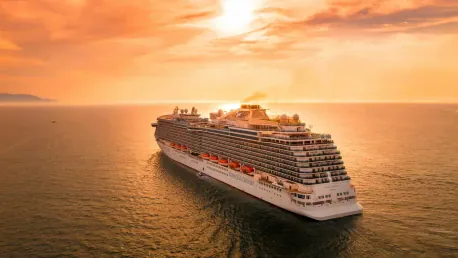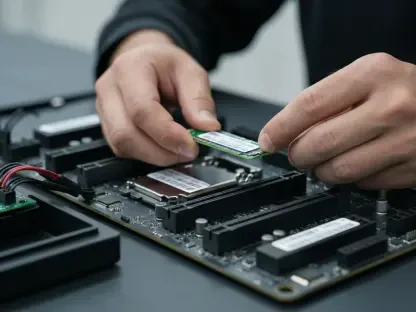Cruise ship connectivity has witnessed a remarkable transformation thanks to innovations driven by Wireless Maritime Services (WMS), a leading global provider of remote wireless solutions. Through their history of groundbreaking advancements, strategic partnerships, and innovative pricing models, WMS has revolutionized wireless connectivity for cruise operators and passengers alike. By leveraging their engineering expertise, the company has set new standards in maritime communication technologies, ensuring that connectivity at sea rivals land-based experiences in terms of reliability and security.
Pioneering Maritime Connectivity
WMS has played a pivotal role in transforming wireless connectivity within the maritime industry. The company’s groundbreaking achievement of installing the first commercial cellular network on a cruise ship in 2004 marked a significant milestone. This move not only set the stage for further advancements in maritime communication but also catered to the growing demands for enhanced connectivity among passengers and crew members.
The company’s quest for continuous improvement in service performance has been relentless. Over time, WMS has successfully upgraded from 2G to 3G, and further to 4G cellular technologies. In their latest stride, the company introduced 5G technology in 2024, which has considerably elevated the connectivity experience for cruise passengers. This commitment to technological advancements is further demonstrated through WMS’s partnership with Starlink. By integrating low Earth orbit (LEO) satellite constellations, WMS has significantly enhanced the connectivity experience on cruise ships, providing better speed, coverage, and reliability.
Engineering Excellence
The cornerstone of WMS’s success lies in their engineering expertise, which draws upon diverse experiences from fields such as maritime, cruise, and military sectors. This broad knowledge base enables WMS to tackle the unique challenges of providing robust and reliable connectivity aboard passenger ships. These challenges include managing complex radio-frequency environments arising from steel hulls, bulkheads, multiple decks, and numerous staterooms.
WMS’s advanced technological capabilities are evident in their ability to deliver high-speed cellular connectivity through various satellite backhaul connections, including geostationary (GEO), medium Earth orbit (MEO), and low Earth orbit (LEO) satellites. Each of these satellite technologies offers distinct benefits, from the wide coverage of GEO satellites to the lower latency and higher data rates of MEO and LEO satellites. This extensive array of satellite solutions showcases the company’s capacity to adapt to different needs and conditions, ensuring reliable and uninterrupted internet access at sea.
Commitment to Security
As connectivity becomes increasingly integral to the cruise experience, the importance of secure communication cannot be overstated. WMS addresses this demand by offering end-to-end encrypted cellular services, which cater to the growing need for secure internet access, especially for sensitive activities such as online banking and accessing medical information.
This shift towards expecting seamless connectivity reflects broader digital dependency trends and the rise of remote work. Passengers no longer view cruises as an opportunity to disconnect; instead, they expect the same level of connectivity they would have on land. WMS’s dedication to providing secure and reliable internet services aligns with these evolving expectations, ensuring that passengers can continue to work, stay connected with family and friends, and access essential services without compromising their data security.
Innovative Pricing Models
One of the primary obstacles to widespread connectivity adoption at sea has historically been the prohibitive cost. Initially, high and unpredictable charges deterred many passengers from using these services. WMS recognized this challenge and, through their collaboration with AT&T in 2013, introduced the cruise industry’s first connectivity packages with set prices for specific amounts of calls, texts, and data.
This innovative approach revolutionized how connectivity services were perceived and used by passengers. By making these packages more affordable and predictable, WMS not only enhanced passenger satisfaction but also opened new revenue streams for cruise lines. Continuing their commitment to affordability, WMS has since extended these packages through partnerships with over 400 global carriers. Notably, a plan with Verizon allows passengers to use their devices at sea for a fixed daily price, further improving cost predictability and accessibility.
Dual Connectivity Usage
Another trend within the cruise industry is the dual usage of Wi-Fi and cellular services by passengers on the same device for different applications. This behavior highlights the increasing complexity of connectivity demands and the need for versatile and reliable solutions. Wi-Fi is typically used for activities that require heavy data usage, such as video streaming and large file transfers, while cellular services are preferred for moderate data usage due to their reliability and end-to-end encryption.
WMS has adeptly responded to these evolving needs by continuously advancing their technologies and services. By offering both Wi-Fi and cellular connectivity, WMS ensures that passengers have the flexibility to choose the service that best meets their specific needs at any given time. This capacity to cater to varying connectivity requirements underscores the company’s capability to deliver a seamless and comprehensive internet experience.
Strategic Partnerships and Support
WMS’s strategic partnerships with mobile carriers and satellite providers have been crucial in their ability to meet the growing demand for high-quality connectivity at sea. These collaborations allow WMS to leverage the latest technologies and infrastructures, enhancing their service offerings and expanding their reach.
In addition to these partnerships, WMS provides comprehensive support to ensure that connectivity services remain reliable and efficient. This support includes 24/7 remote network monitoring and management services, as well as the deployment of field service technicians globally. These technicians handle installations, optimize networks, and perform maintenance without disrupting cruise operations. This level of support guarantees that connectivity services are consistently high-quality, contributing to a positive experience for both passengers and crew.
Future Innovations
Cruise ship connectivity has seen a phenomenal shift thanks to innovations driven by Wireless Maritime Services (WMS), a top global provider of remote wireless solutions. Their history is marked by groundbreaking advancements, strategic partnerships, and inventive pricing models, which together have drastically improved wireless connectivity for both cruise operators and passengers. Through leveraging their engineering prowess, WMS has set new benchmarks in maritime communication technologies, making sure that sea connectivity is on par with land-based systems in terms of reliability and security. This has created a seamless and dependable online experience, whether you’re on the open ocean or cruising near the coast, ensuring that passengers can stay connected with friends and family back home, as well as access crucial services. WMS continues to push forward, affirming their role as leaders in maritime communication and transforming the onboard experience for everyone at sea.









